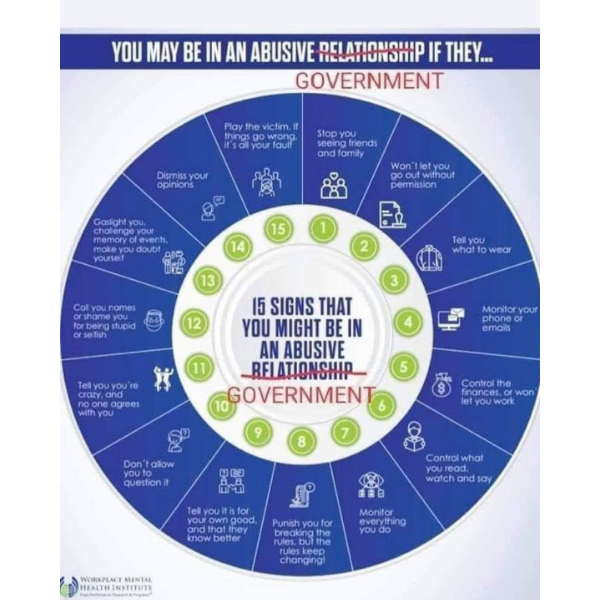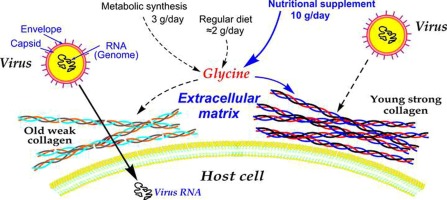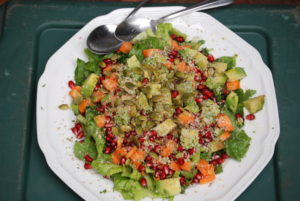EpiGirl is a fictional character in the SPARS epidemic scenario that was published in 2017. EpiGirl collates the adverse reaction reports from VAERS and other patient forums and it seems worse. The scenario works through that issue by suggesting it was duplicated records.
2017 SPARS Report –
- Main site: https://www.centerforhealthsecurity.org/our-work/Center-projects/completed-projects/spars-pandemic-scenario.html
- Pdf copy elsewhere: https://jhsphcenterforhealthsecurity.s3.amazonaws.com/spars-pandemic-scenario.pdf
A database is needed, collecting data is needed – that is basic to experimental design – collect data, all the data. And in this case, all the data includes adverse reactions in the experimental group or in those with passive exposure reactions. That is even stated in the branded experimental design literature. In this case data is not being collected and definitions are being changed so the data that is being collected does not match the redefined label.
A whistleblower nurse shared what is happening with the data regarding who is in the hospitals with Covid currently – the experimental group (vac) or the control group (unvac)? The definition was changed to call anyone within 14 days of an injection unvaccinated, allegedly because their antibodies wouldn’t be expected to be elevated enough to be protective yet. That may be true but it doesn’t change the fact the person was in the experimental group – did receive an injection, or a second injection – they are no longer in the ‘unvaccinated’ control group immediately after getting the first injection.
The adverse reactions tend to occur early also, within the first few days after an injection, or second one, according to the nurse. See the full story here: twitter.com/AxelSavage4/status/1437624425281511429?s=20.
From the replies:
“Benny Nomad@BennySeattle· Replying to @AxelSavage4 : “Have you considered that what you are describing is fraud? They are calling everyone who has had their first shot un-vaxxed, and if they have had the second shot, for the following 14 days they are still considered un-vaxxed. How is that not fraud?
LibertySavage@AxelSavage4· “That’s exactly what it is”
The first injection or exposure can prime an allergy-like over response of the immune system to occur the next time the antigen is present in the body. People who were already sick with CoV may be at more risk of an over-reaction to an injection, because their immune system was primed by the earlier sickness.
Another medical professional shared concerns over underreporting of adverse reactions, to the US VAERS adverse reaction database. Doctors are being threatened to not report cases to the system. See: EXCLUSIVE: COVID Whistleblower Claims the VAERS Reporting Database Tracking Vaccine Complications is WRONG and Undercounting by a Factor of 100! (thegatewaypundit.com/2021/09)
170,000 comments about adverse reactions have been submitted to a news website:
News article about the ABC website postings: Unexpected and heartbreaking: Thousands flood ABC affiliate’s Facebook page with vaccination horror stories. (Sept 13, 2021, worldtribune.com) “39,000 responses (as of mid-day Sept. 13)“
- UK data on death rate following CoV injections was requested by Freedom of Information, and 28 day was unavailable, changing the request to 21 days post injection led to a disturbingly large number. “Correlation is not causation” just means double check, it may be coincidence, or it may indeed have a causal link. In the first six months of 2021, 30,305 deaths were recorded, for people who had received a CoV injection within the past 21 days. See: https://thetruedefender.com/england-lost-30305-people-within-21-days-after-a-covid-19-vaccine-in-the-first-6-months-of-2021/
- FDA, recorded meeting about adverse reactions to CoV injections https://youtu.be/dl57-UdPeT0
We need reliable data that has been double checked for identity, confidentially, in order to prevent duplication of record entries. We need reliable data that is contained in a cybersecure location on a hosting platform that is independent from technology that may be compromised regarding reliability, on Linux systems for example.
- *Guidance is being provided on Telegram, if you are interested in learning about using Linux instead of Windows type systems. Sign up on Telegram first, and then search for and follow ‘Jeffrey Peterson,’ in his pinned posts look for the discussion Chat room link: @jptchat. People are helping each other get set up and Jeffrey also provides guidance and has tutorials.
- Invite link: JP’s technology chat: https://t.me/jptchat
EPIGIRL 2 will need funding and a lot of volunteers around the world. These adverse reactions are happening around the world. The injection batches were not claimed to be or required to be, all the same product, so different locations may have been test cases for different experimental batches. Adverse reactions may cluster by batch/location, not just by ethnic/genetic or health differences. Without reliable data at an international level, those patterns will not be revealed. Giving us the need for EPIGIRL 2 – Epidemiologic Patterns in Genetics; Injection Reaction Log – an Extremely Professional, International, Giant, Injection Reaction Log. EPIGIRL squared – two names to represent the two strands of the double helix of a DNA molecule.
The recommendations made by the committee investigating adverse reactions should be included as the basis of EPIGIRL 2 (from the last post, Chimeric Spike, with Prion-like areas). If we are to follow the ‘science’ – that is what the science says:
Immunization Safety Review Committee
- Surveillance of adverse events related to vaccines is important and should be strengthened in several ways:
- The committee recommends that standardized case definitions for adverse events be adopted.
- The committee recommends that formal guidelines or criteria be developed for using VAERS data to study adverse events.
- The committee recommends the continued use of large-linked databases, active surveillance, and other tools to evaluate potential vaccine-related adverse events.
- The committee supports the development of Clinical Immunization Safety Assessment (CISA) centers to improve understanding of adverse events at the individual level.
- One area of complementary research that the committee continues to recommend is surveillance of ASD* as exposure to thimerosal declines. (*Autism Spectrum Disorder)
- The committee recommends increased efforts to quantify the level of prenatal and postnatal exposure to thimerosal and other forms of mercury in infants, children, and pregnant women.
- 2. Excerpt : Immunization Safety Review: Vaccines & Autism, BOX 2, Comm. Conclusions & Rec. Institute of Medicine (US) Immunization Safety Review Committee. Washington (DC): National Academies Press (US); 2004. https://www.ncbi.nlm.nih.gov/books/NBK25349/#a2000af8fddd00068
The SPARS report predicted an EpiGirl – we need her, badly, desperately – truthfully. This is dangerous, and is a genocide because some are more at risk than others.
Methylation: Anyone with methylation gene defects would be more at risk for epigenetic gene changes which can lead to conditions like POTS. See: Epigenetic changes may also be involved in Covid19 or LongCovid, Nov 18, 2020. They would be healthier by not taking standard B supplements which have unmethylated forms of B12 and folate. Instead seek out food sources that aren’t the supplement fortified types, and/or methylated forms of folate and B12 (not folic acid or cyanocobalamin – yes the standard form of B12 used in the US contains cyanide and taking too much of it for too long can lead to cyanide poisoning – does it make sense to use cyanide in a dietary supplement? NO, but that is off-topic.).
BHMT: People with a BHMT gene allele would also be more at risk for inflammatory membrane break-down. There is an ethnic difference in rate – people with Caucasian or African ancestry are more likely to have a defective BHMT gene allele than people of Asian ancestry. See: Cannabinoids are made with the BHMT gene (and others). Feb, 25, 2021.
Glyphosate: Glyphosate residue is also likely a factor in rate of severe reactions in CoV illness or injection reactions. See: Glyphosate and COVID-19, Oct 25, 2020, it has dietary tips for trying to reduce glyphosate intake and improve the negative effects. Glyphosate can increase the risk of misfolded proteins and may be adding to the out of control inflammation. It also likely is increasing the risk of low vitamin D and minerals such as manganese and the amino acid methionine. Manganese is really essential for mitochondria to function normally. Tracking patterns of severity of illness over geographic regions that produce or use more biofuel made with biomass from glyphosate crops is a need. Asking people with adverse reactions, and the control group, those without, to have a urine test for glyphosate residue, is a need. Reliable data requires collecting data in a method that is consistent and has quality control standards to assure the results are reliable. How a sample is taken, stored, and tested, all may affect quality of the results.
Citric Acid Cycle Nutrients & Cofactors: The spike protein is harming mitochondria, which then the debris from the mitochondria, harms our cells. We need to protect our mitochondria as cancer and other chronic degenerative disease is preceded by dysfunction of mitochondria. They switch from using oxygen and the Citric Acid Cycle. For mitochondria to be able to perform the chemical reactions of Citric Acid Cycle they require that we have nineteen different nutrients and cofactors available to them – and in balance and in adequate amounts – not just ‘one’ nutrient. One problem/one cure – is not how the body works or how nutrition works.)
Cytokine storm risk: Ten to fifteen percent of the population are estimated to be at great risk for a severe cytokine storm reaction to ANY severe immune challenge, whether a vaccine or an infection. (5) See: Cytokine Storm, SIDS, autism and Vitamin C, March 29, 2020. Their bodies do not react normally to infection. Genetic screening is needed to identify the genes involved and then screen for those at risk.
In the meantime, high dose intravenous vitamin C (Marik Protocol) therapy does work well to reduce the cytokine storm from escalating and prevent the damage that can be caused by it. See: Bitter taste receptors in the lungs & Hesperidin’s decongestant properties. April 7,2020 < the food and supplement recommendations are still valid.
“You can lead a horse to water, but you can’t make it drink.” Self care – includes the word self, because oneself, is in charge of self care. It is not about spa treatments or getting disabling nail extensions applied with potentially toxic chemicals. That is not self care in any kind of health sense.
The only problem with that plan is that the FDA is preventing use of the treatment for Covid related care. It does not have risky side effects and has a large amount of supportive research for similar cytokine conditions. There is no sensible reason to not approve it for use during an alleged pandemic emergency – if we have an emergency, then we should be providing emergency care to those who need it – NOT WITH-HOLDING IT, or criminalizing the use of it by independent physicians who deem it in their patient’s best interest.
Vitamin C given in advance of a vaccine may also help reduce the risk of an over-reaction of the immune system – even for animals that can make some of their own vitamin C (we can’t make any). From the post: “Giving extra vitamin C before vaccines was found to be protective even in lab animals that genetically can make vitamin C. (4)“
If health is the goal – then why hasn’t everyone been told that taking vitamin C in advance of a vaccine can help prevent an over-reaction of the immune system?
If health is the goal – then why don’t we screen for the 10-15% who will have a very severe reaction, which may result in a neurological condition that lasts the rest of their life, and EXCLUDE them from being given an immune challenge? They likely would never get exposed to tetanus or many of the other rare conditions that many vaccines are designed to protect against.
If health is the goal – then why did 170,000 people reply to a news-site about the death of someone they know that occurred after a CoV injection? If the VAERS system is only collecting 1% of adverse reactions, and currently shows a death count of ~14000 (check this, yes, almost 15,000 now, and over 19,000 people were left permanently disabled after CoV injections).
If health is the goal – then why are the CoV injections seeming to be used as a euthanasia device?
Adverse reaction entry to VAERS, shared by AMM MD on Telegram, invite link if you are on Telegram:
AMM, MD
Covid vaccine AEs and other hidden truths
https://t.me/AMM_MD
“WHY VACCINATE PEOPLE IN THE LAST DAYS OF THEIR LIFE? 🤬” (- AMM MD)
71 yo F “In her end days of lung cancer was not eating and drinking very little for 3d before vaccination was given. She became very ill as she was told she might and was unresponsive and in the hospice 2d later. [Died 6d after vax.]. The adverse effects of this vaccine served no purpose to be administered to an imminent end to this dying woman. The vaccines effects would never have gotten in her body till after she had died and only made her more sick and weak then she needed to be.
Write-up: Suddenly more weak , exhausted, all around much worse then she had been feeling as she was in her last days of lung cancer. Within hours of the vaccine she was worse and in 2d unresponsive and in a hospice. 4d [later] she died.” 1637303″ (quoted from VAERS, the US adverse reaction database).
Health doesn’t seem to be the goal to me.

– guidance about emotional manipulation- domestic violence often dies not include outright hitting, may just be threats or verbal abuse, or silent treatment to ‘punish’ the victims.
American Frontline Doctors is a group working towards making early treatment available to anyone who wants it. Their site has a proposed Vaccine Bill of Rights: https://americasfrontlinedoctors.org/take-action/the-vaccine-bill-of-rights/
- To find me On Telegram, join deNutrients Chat Group, here is an invite link: https://t.me/joinchat/t6MItr_4gsk1NGU5
- On Twitter: @deNutrients or @selfcarerocks.
EPIGIRL 2 is needed, with a giant team, for a giant project, because a giant massacre is happening, and being lied about – ask yourself “What would Viktor Fankl do?”
Answer – take notes, really good notes.
More info: Viktor Frankl on the Human Search for Meaning, Maria Popova, (brainpickings.org).
I have begun a Protocol on a supplement dispensing site – people who enroll as clients could order at a discount from the items I’ve prescreened and added dosing details for, or browse the catalog. People who enroll as clients could be later added to an EPIGIRL 2 database. Starting is a place to start.
The Protocol: Health Aids for Special Times – it has a lot of food and general health info also. I maxed out the memory and need to copy it over to a pdf though, and probably break the supplements and protocol into smaller groups. Important point to add – to detox – don’t overeat regularly. The body needs to get a little hungry to have the time and need for white blood cells to go looking around for cellular debris to clear up and reuse for nutrients. When we overeat the body and blood cells are busy coping with storing all the excess nutrients as fat or cholesterol plaque or excreting some of it.
Disclaimer: This information is provided for educational purposes within the guidelines of fair use. While I am a Registered Dietitian this information is not intended to provide individual health guidance. Please see a health professional for individual health care purposes.


